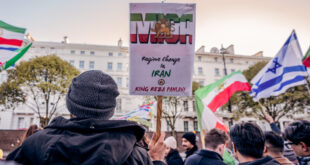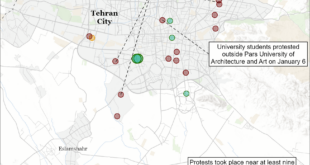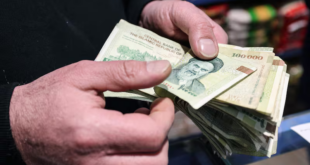 TEHRAN (FNA)- Iran has cut oil production by 200,000 barrels per day (bpd) from 4.04 million bpd, in line with an OPEC agreement to find ways to support declining crude prices, an Iranian oil official said on Friday.
TEHRAN (FNA)- Iran has cut oil production by 200,000 barrels per day (bpd) from 4.04 million bpd, in line with an OPEC agreement to find ways to support declining crude prices, an Iranian oil official said on Friday.
“We are obeying the OPEC quota. We have cut by 200,000 bpd,” Mohammad Ali Emadi, a director of the National Iranian Oil Co (NIOC), told Reuters in Beijing, where he is attending a forum of national oil companies.
The Organization of the Petroleum Exporting Countries agreed at an emergency meeting on Oct. 24 to lower its output ceiling by 1.5 million bpd, or around 5 percent.
It had already said the month before that it would take away around 500,000 bpd pumped above its agreed target.
Asked about the excess crude from the cuts, Emadi said, “Some will be sent to storage and sometimes we use this opportunity for overhaul and maintenance.”
He said Iran, the world’s fourth-largest oil producer, was targeting 5.0 million bpd of oil production capacity by the end of 2010, up from capacity of 4.2 million bpd now.
“We have some major plans (to raise total output), including the upgrading of surface facilities for more water cut separation,” he said. “We are also planning more gas injections and water flooding in offshore areas. On top of the brownfield projects we are also developing many greenfields.”
Iran’s oil and gas sector is turning to energy-hungry Asia for funds, expertise and technology as part of its Look-East policy to elude US sanctions and pressure over the Islamic Republic’s nuclear program.
Iranian officials have dismissed US sanctions as inefficient, saying that they are finding Asian partners instead. Several Chinese and other Asian firms are negotiating or signing up to oil and gas deals.
Following US pressures on companies to stop business with Tehran, many western companies decided to do a balancing act. They tried to maintain their presence in Iran, which is rich in oil and gas, but not getting into big deals that could endanger their interests in the US.
Yet, after oil giants in the West witnessed that their absence in big deals has provided Chinese, Indian and Russian companies with excellent opportunities to signing up to an increasing number of energy projects and earn billions of dollars, many western firms are slowly losing reluctance to invest or expand work in Iran.
Some European countries have also recently voiced interest in investment in Iran’s energy sector after a gas deal was signed between Iran and Switzerland regardless of US sanctions.
The National Iranian Gas Export Company and Switzerland’s Elektrizitaetsgesellschaft Laufenburg signed a 25-year deal in March for the delivery of 5.5 billion cubic meters of gas per year.
The biggest recent deal, worth €100m ($147m, £80m), was signed by Steiner Prematechnik Gastec, the German engineering company, this month to build equipment for three gas conversion plants in Iran. This is at a time when France’s Total, Royal/Dutch Shell and Norway’s Statoil have put on hold their shares in multi-billion dollar contracts.
China’s Sinopec Group, parent of Sinopec Corp., signed a deal last December to develop Iran’s huge Yadavaran oilfield.
“Output of these brown and greenfields will provide this figure (of 5 million bpd),” Emadi said.
“Many of these investments are Iranian investments. Frankly, we are not missing a huge amount of opportunity. We use internal budgets,” he said, when asked if the tight credit climate was having an impact on investments.
He said China’s refining capacity was projected to double to 3.2 million bpd in five or six years, from 1.6 million bpd now. The additional refining capacity will include newbuilds and upgrades, he added.
Asked if more Iranian crude would go to Europe or to Asia, he replied, “Regarding the demand of the market especially from China and India, a little bit more (is seen) this way (Asia).”
Emadi said Iran was continuing to talk to potential buyers in the Middle East and South Asia for its gas: with Bahrain for 1 billion cubic feet per day (cfpd), the United Arab Emirates for the same volume, Kuwait for 0.5 billion cfpd, and India and Pakistan each for 60 million cu meters per day.
“For these new agreements, some we are finalizing the points, some we are in the discussion stage,” he added.
 Eurasia Press & News
Eurasia Press & News



